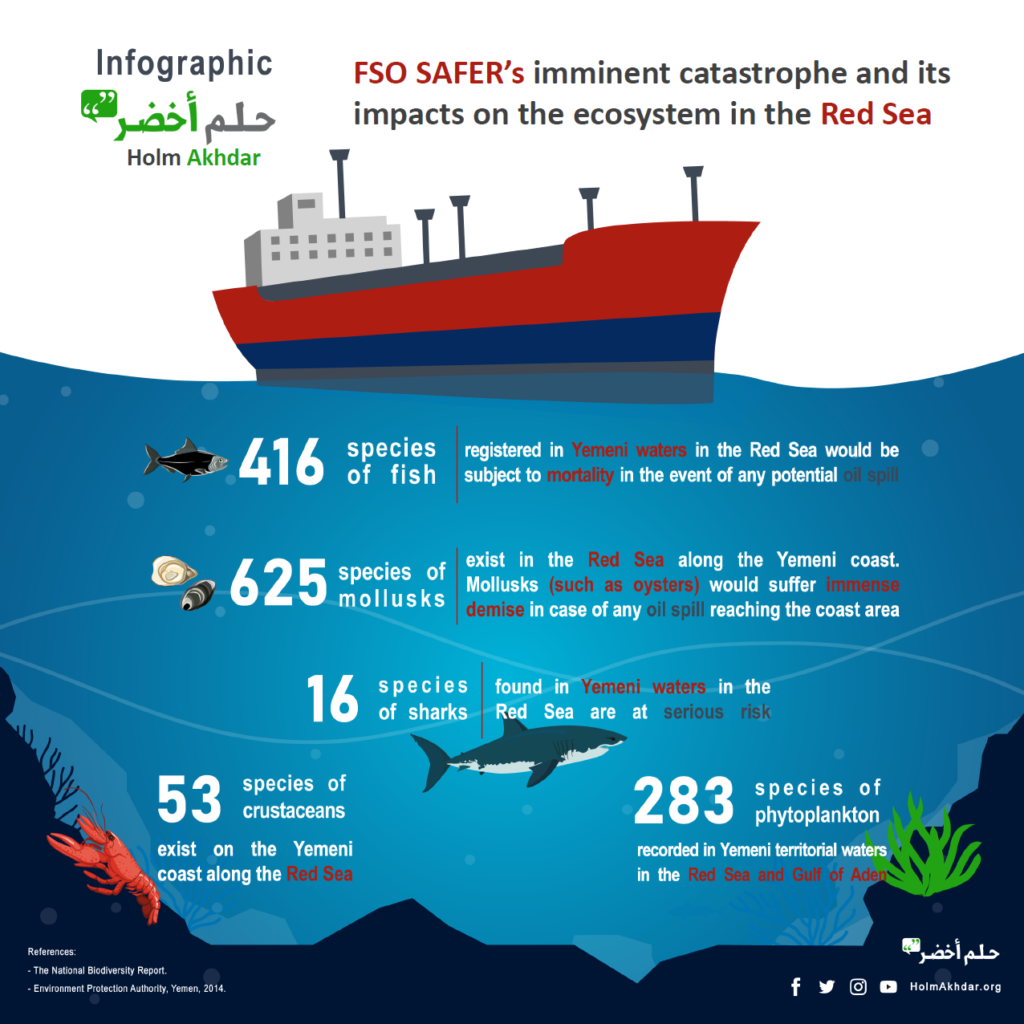Holm Akhdar- Special Report
Yemeni territorial waters in the Red Sea, Gulf of Aden and the Arab Sea are exposed to oil spills from ships and oil tankers, affecting marine and biodiversity.
However, the FSO Safer oil tanker, abandoned 8 km off Ras Isa Port, north of Al-Hodeidah, six years ago, could cause a tremendous pollution disaster in case of 156,000 tons of crude oil onboard spilled out.
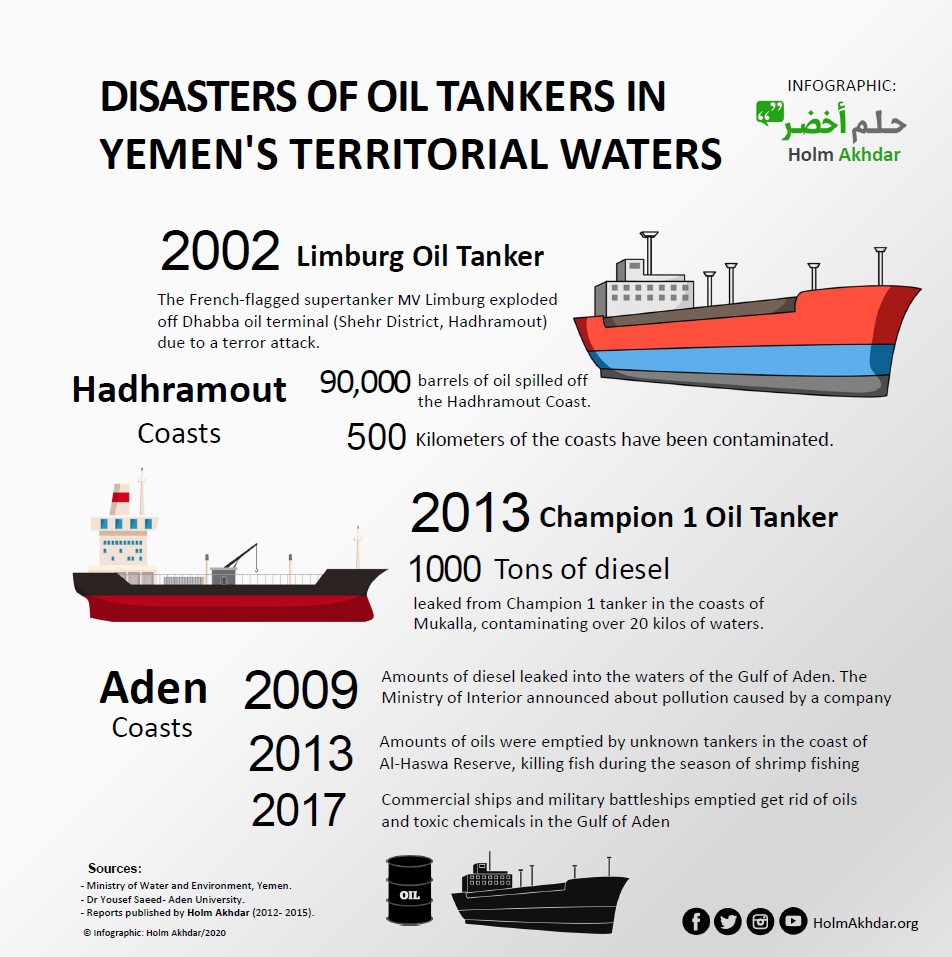
What is FSO Safer’s Story?
8 kilometers off Ras Isa Port, in Al Hodeidah; the coastal governorate on the Red Sea, the floating storage and offloading FSO Safer has been anchored for 6 years, without maintenance.
The FSO Safer is burdened with around 1,148 million barrels of crude oil on board. Its iron hull was subjected to corrosion and decomposition, operating systems have been disrupted, and the firefighting system has stopped.
On May 27, 2020, seawater seeped into the engine compartment. “The leakage was contained after being temporarily repaired; however, that is unlikely to continue for long“. UN said.
Due to water and ecological conditions of the area, frequent water seepage to the tanker Safer engines may lead to extremely severe and difficult-to-control oil spill.
Another alarming possibility for the FSO Safer is to explode, due to potential ignition of the gas amassed in its storage tanks. All these threats could result in an ecological disaster whose impacts might destroy the potentials of the Yemeni marine environment. Experts confirmed.
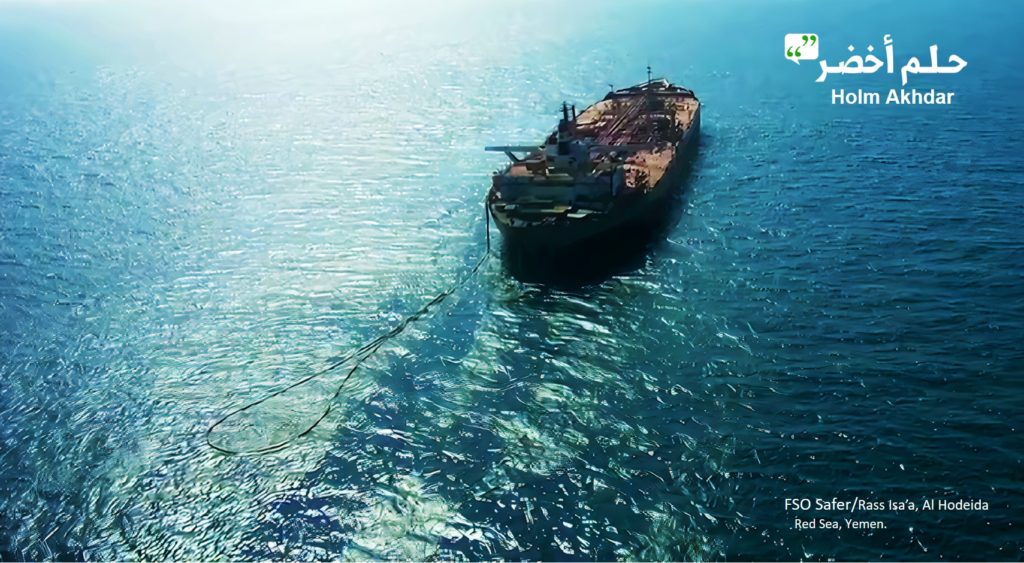
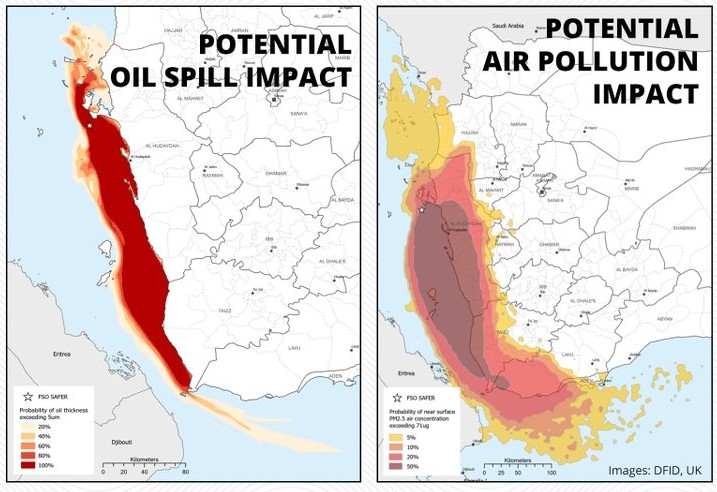
According to a Yemeni geologist Dr. Abdul-Ghani Jaghman, who worked on a scientific study in 2017 on the effects of Safer’s potential oil spills, “The area where the FSO Safer is moored is environmentally sensitive, as it includes many marine, coastal and island environments, mangrove forests, seaports, cities, agricultural fields, water wells and water stations”.
“Environmental pollution will not only destroy the fisheries sector, small fisheries and marine resources. Rather, its damage will reach the agricultural sector of the agricultural areas located on the Tihama Plain and in the mountainous heights overlooking it in each of the governorates: Hajjah, Al Mahwit, Raymah, and the outskirts of Sana’a governorates, because of the volatile substances from the leaked oil, which will mix with rainwater and pollute the agricultural wealth in the long term”. Dr. Jaghman told Holm Akhdar Platform.
“We are talking about a potential damage that might affect an area of 600-1000 km along the Red Sea coast. Namely, Tihama area with its plains and mountains, will be one of the most affected areas, directly and indirectly,” he said.
The analysis of the risk and impact of the FSO Safer, issued by Riskaware on Nov 18, indicates that over 8,000 wells are at risk of contamination, reducing access to water and increasing the risk of disease outbreaks.
Heavy contamination and pollution could extends as far as the Bab-el-Mandeb Strait, with some oil passing beyond into the Gulf of Aden. (Riskaware)
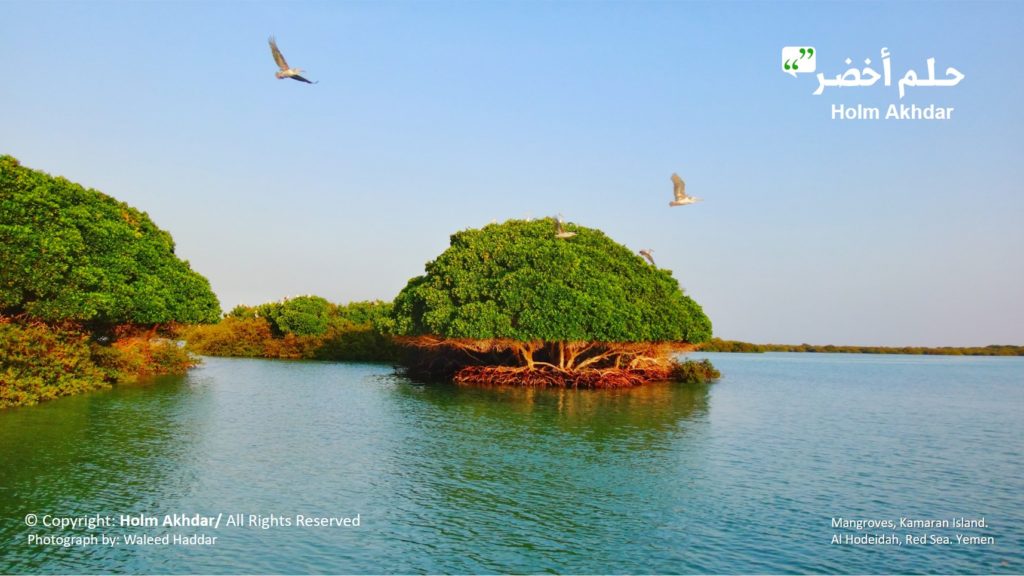
Yemeni Islands and Potential Oil Spill
Yemen has more than 186 islands in its territorial waters. They are characterized by distinctive climatic and natural characteristics. Some 152 of those islands are located in the Red Sea area, along the western coast of Yemen.
Hundreds of Yemeni islands in the Red Sea, located within the heavy sea traffic lane of all types of vessels, are subject to oil spills from ships and oil depots.
Out of the 152 Yemeni islands in the Red Sea, around 115 Yemeni islands along the western coast might be subject to direct damage as they are on the path of imminent oil spill from Safer. These islands might lose their natural habitats and lose their biodiversity, as well.
Due to its diversity of distinctive coral habitats, Rasha Island, 3 km off the moored FSO Safer, is a unique fish environment. It, however, would be the first island damaged by any potential oil spill, followed by Kamran Island which is rich in mangroves and considered the largest island in the Red Sea.
Kamran Island Reserve is located off the western coast of Yemen, about 6 km away from Al-Salif seaport in the coastal governorate, Al-Hodeidah.
Kamran Island has an area of 52.57 square kilometers. The population of the island is about 3000 people, and fishing is their main source of income.
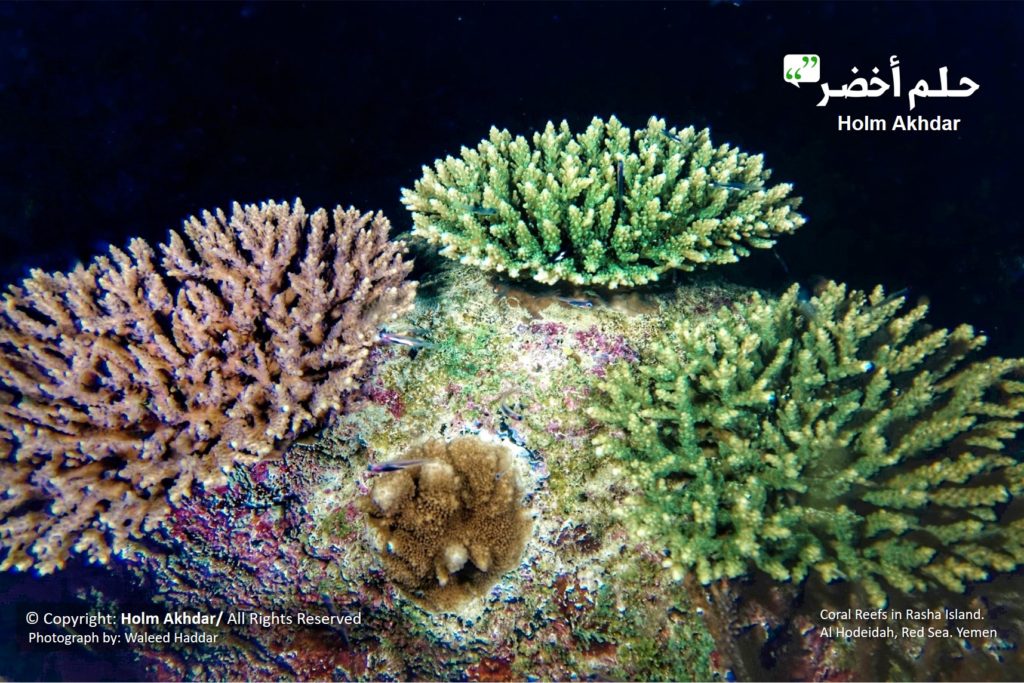
Habitats and Coral Reefs
According to Yemen’s National Biodiversity Strategy 2017, the Red Sea is a home for distinctive coral ecosystems that support marine habitats. The Red Sea is also a regional center for endemic fish species and invertebrates. It hosts unique flora and fauna, a number of sea turtles, many endemic birds and other unique species.
As indicated in one of the surveys, coral reefs in the Red Sea are mainly coastal reefs surrounding the islands, and according to the National Biodiversity Report, about 25% of the Yemeni coastline is covered with coral reefs.
“The Red Sea is one of the largest natural depots that possess the ecological or biological diversity in the region. For example, there are more than 300 species of coral reefs in the Red Sea and nearly 1300 types of fish”. Said Dr. Abdulghani Jaghman, an expert and consultant at Ultare Consulting, an international consulting firm for strategic studies.
Coral reefs in the Red Sea are characterized by the fact that they live in warmer waters than current ocean temperature, whereas, coral reefs in north of the Gulf of Aden are limited, due to extreme and intense seasonal cold.
Coral reefs surround limestone islands such as Kamran Group or the Southern Fursan Islands, and the volcanic oceanic islands on the West Coast such as the Hunnish, Zuqar and Zubairi Islands.
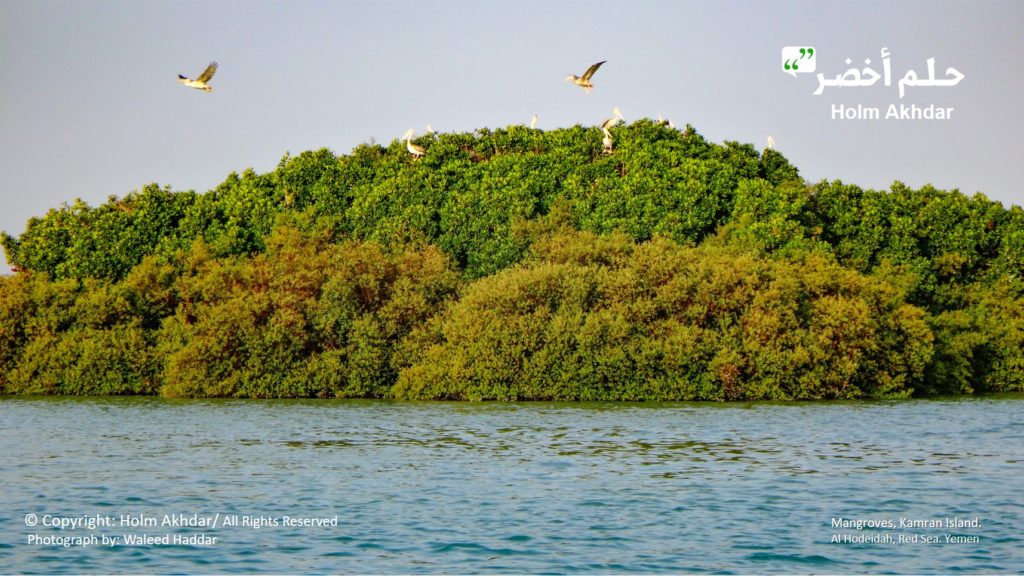
Mangrove Forests in Yemen
Mangrove trees are more common in tidal area near the Red Sea shore. They grow in seawater and found in scattered areas along the coast, precisely near Al-Khouba and Luhaya areas.
Mangrove leaf decomposition provides a home for residues and bacteria, which are the primary food source for medium-sized marine organisms, mollusks, and crustaceans, including commercial shrimp. They also provide nesting sites for shore and sea birds (EPA, 2014)
For survey data carried out by the Yemeni Island Development Authority, August 2002, the total length of mangrove forests along the Red Sea coast and near Yemen’s coastal islands is estimated at 128 km.
The total area of mangroves in Yemen is about 12% of the Red Sea coastline. However, more than 55% of its marine habitats are concentrated along the northern coast between Midi in Hajja and AL-Luhaya in Al-Hodeidah.
In a special interview, Dr. Hisham Mohamed Naji, an associate professor of coastal environment and Acting Head of the Marine Biology Department at Sana’a University, says to Holm Akhdar, “the closer the oil spills get to the coast, the more serious the risk becomes”. “There is, of course, a risk of oil spilling in the middle of the sea, but the risk gets more serious once oil slicks approach the coast as they destroy both coastal and marine environments. The clean-up process of that leak becomes more complicated,” Dr. Hisham explained.
“In the event of an oil spill, taking place in the middle of the sea, those contaminated oil slick will form a layer on the surface of water. This layer will have major impact on the ecosystem, as it will prevent light from reaching organisms that depend on photosynthesis in the water column (water layers), and thus blocking oxygen and light needed by marine organisms living in the depth, which ultimately means their definite death”. Dr. Hisham said.
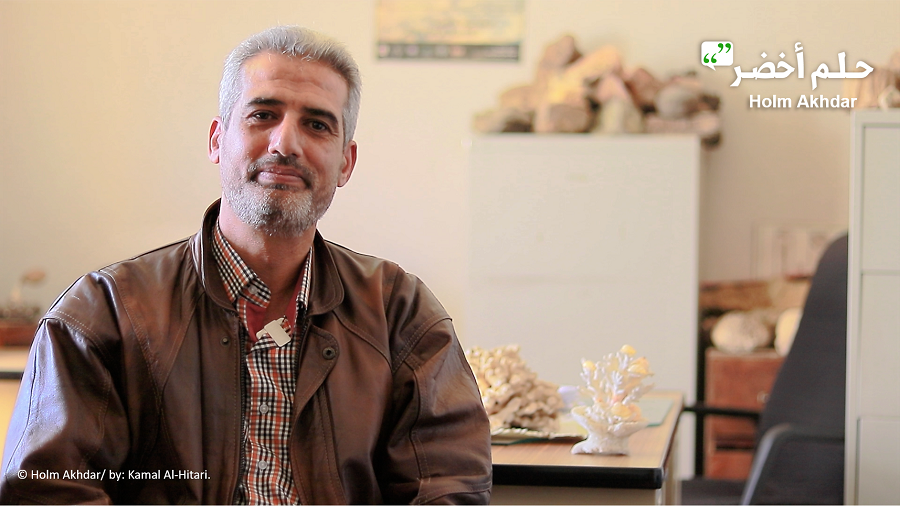
Algae: 485 Species in the Red Sea
As mentioned in the Strategic Biodiversity Report 2017, there are about 485 species of algae in the Red Sea, 39 of which are enlisted on the west coast of Yemen in the intertidal zone between Dhubab – Yakhtal and Salif – and Al-Arj in Al Hodeidah.
283 Phytoplankton Species
According to the research 2011, there are 283 phytoplankton species enlisted in the waters of the Yemeni Red Sea and the Gulf of Aden. A total of 206 diatoms and dinoflagellates have been found in Yemen’s waters. 32 species of them are restricted to the southern part of the Red Sea and the Gulf of Aden. 56 species have been enlisted in Ras Isa Peninsula off Yemen’s coastal waters. Other 21 species have been enlisted in Kamran Bay.
Oil spill damage from the Safer tanker
115 Yemeni islands in the Red Sea will lose their biodiversity as well as their ports
126,000 Yemeni fishermen will lose their lose their jobs
850,000 tons of fish stocks in Yemeni waters on the Red Sea. 969 Number of fish species in water pic.twitter.com/C8q0PTnPUn— حلم أخضر Holm Akhdar (@holmakhdar) June 14, 2020
Mollusks: 625 Species in the Red Sea
Scientific records of biodiversity in 2014 show that a total of 625 mollusks species were identified in the Red Sea environment along the Yemeni coast. They are found in four categories in the Red Sea.
Moreover, one environmental study found that about 117 mollusks species are found in Al-Salif, Ras Isa, Al-Arj, and north and south Mocha. Mollusks (such as oysters) could suffer enormous deaths if oil spills occurs and reaches coastal areas.
According to the sources, nearly 17 mollusks species are associated with mangrove habitats. About 17 species are in seaweeds, and 32 species exist in sandy beaches. Besides, 37 species live in rocky surfaces and around 72 species exist near coral reefs.
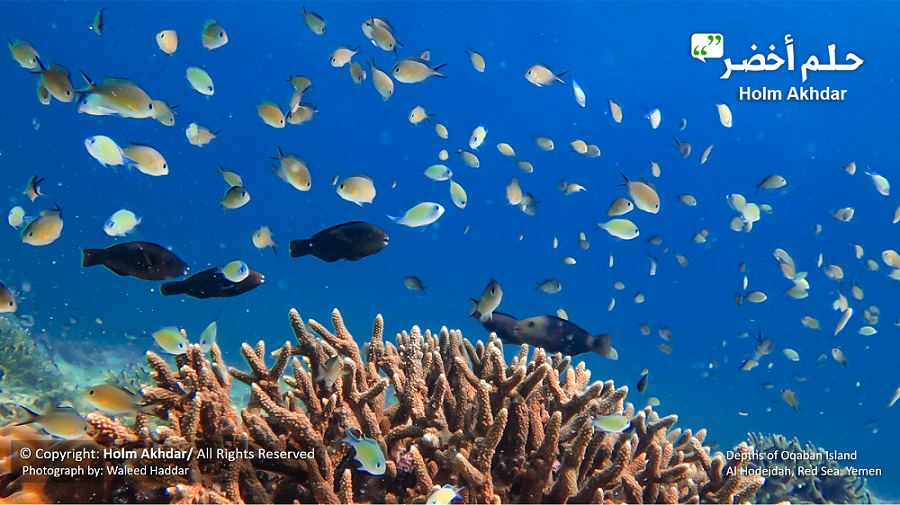
Crustaceans: 53 Species in Yemen’s Waters
53 crustacean species, belong to 6 families of the Yemeni coast of the Red Sea, have been enlisted in Yemeni waters, and about 24 species have been enlisted from the Gulf of Aden and the Arabian Sea. Moreover, 45 species of crustaceans have been enlisted in Socotra Archipelago. (EPA,2009)
Unlike mollusks and enduring crustaceans, crustaceans (such as shrimp and crab) are not exposed to direct effect of oil spills as this group has the potential to move, making it more capable of avoiding exposure to high oil concentration, except for their young, larvae and eggs, which are subject to serious damage as they cannot escape.
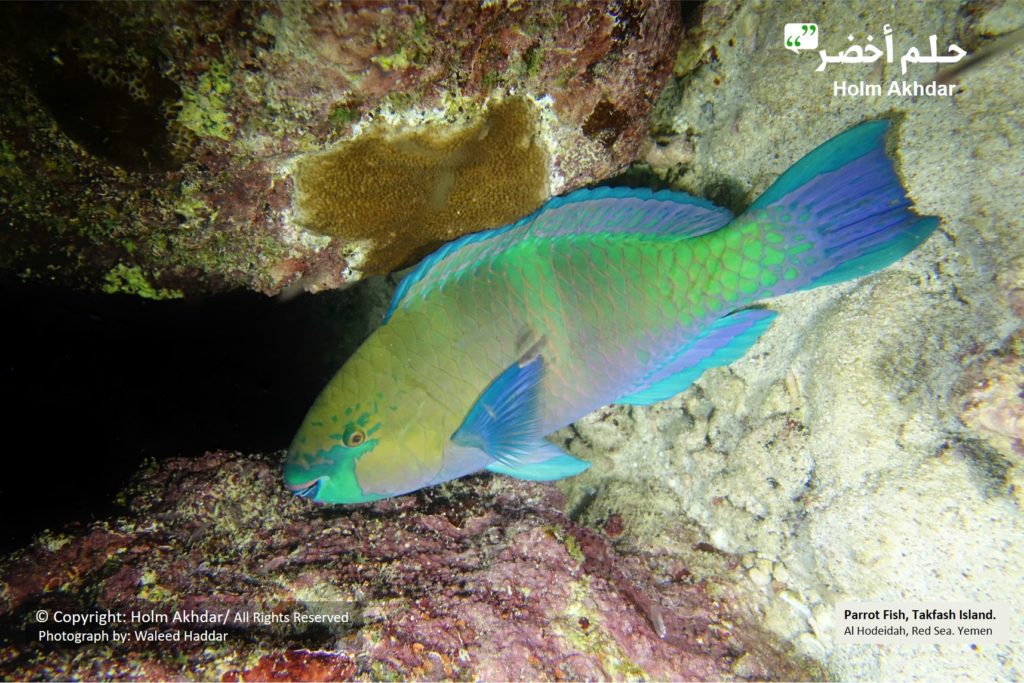
Fish: 416 fish Species in the Red Sea
Yemeni waters are characterized by a wide variety of fish and marine life. As indicated in Ministry of Water and Environment’s reports, 2014, there exist more than 969 fish species in Yemeni waters in 3 marine sectors: The Red Sea, the Arabian Sea and the Gulf of Aden.
Out of 416 fish species enlisted in the Yemeni Red Sea waters, 401 are bony fish and 21 are cartilaginous fish. Besides, about 16 shark species inhabit the Red Sea.
One environmental studies (Holm Akhdar obtained a copy of it) confirms that about 17% of the Red Sea fish are endemic. In addition, 90% of the speckled fish and the triple-finned fish (Family Tripterygiidae) are also Red Sea endemic. However, all these species will suffocate in case of any oil spills from the FSO Safer.

Contingency Plan to Confront Oil Pollution
The Yemeni coastline extends for more than 2,500 km, and according to reports; the Yemeni coast has been suffering the risks of salinization and pollution caused by oil spills from oil tankers over the past two decades, resulted from the heavy sea traffic along the Yemeni coastline and islands. However, Yemeni territorial waters will be subject to serious risk in case of more than a million barrels of crude oil spills from the FSO Safer, which may cause the demise of all those species.
“In case of any oil spills from the FSO Safer, Yemen would never be able to afford the costs of handling oil pollution, nor the costs of addressing the demographic, societal and health impact on the inhabitants of the likely affected areas,” Dr. Abdul-Ghani Jaghman, told Holm Akhdar.”Time is not on our side now, and the concerned authorities must formulate a national strategic plan to confront oil pollution disasters, prepare a contingency plan, and take practical measures to avoid any oil pollution disaster. Not only at the level of Yemen, but also at the level of the Red Sea bordering countries and in cooperation with the United Nations and international organizations.”.
Instructions and Guidance for People
In this regard, Prof. Nabil Abdo Ahmed Al-Shawafi, Professor of Environment Chemistry and Marine Pollution says to Holm Akhdar, “in case an oil spill is apparent and could been seen in the sea, the residents must avoid going to the beaches located in the affected areas.
As practical precautionary measures, Dr. Al-Shawafi says, “When buying fish, if it smells like oil, then it is polluted with oil stains. As fish is being cooked, if it is not moist and tends to be stiff, then these fish might have been exposed to oil pollution, thus citizens are advised not to eat them.
“It is also advisable to buy white-fleshed fish because red and brown-fleshed fish are more likely to absorb and amass oil pollution stains inside them, and citizens should notice the presence of amassed quantity of fat in contaminated fish due to the fact that fats tend to combine with oil”. Dr. Al-Shwafi said.
References:
– Riskaware. Models the potential impact of a release from the FSO Safer oil facility in Yemen. Nov, 2020. UK.
– Yemen’s Sixth National Report to Convention on Biological Diversity (CBD), EPA, Mar, 2019.
– National Biodiversity Strategy. Final Document, EPA, UNDP & GEF, 2017.
– EPA Yemen, Fifth Biodiversity National Report submitted to CBD, 2014.
– Yemen Biodiversity and Tropical Forest: Assessment Report. USAID, Oct, 2013.
